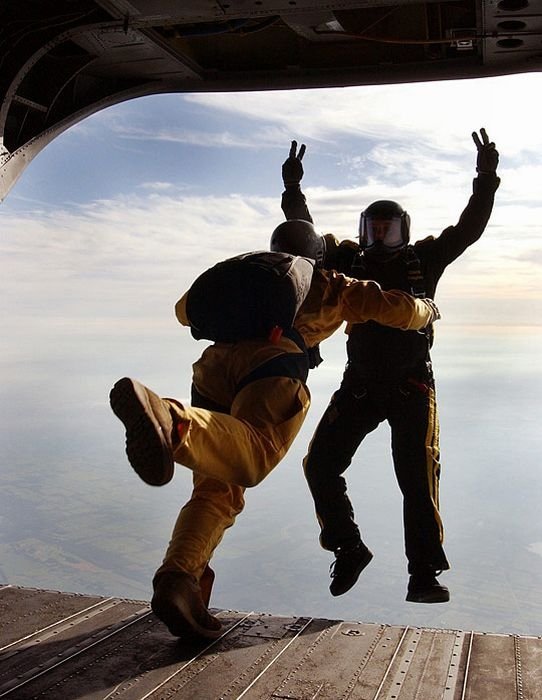|
|
Skydiving Photography
|
Injuries and fatalities occurring under a fully functional parachute usually happen because the skydiver performed unsafe maneuvers or made an error in judgment while flying their canopy, typically resulting in a high speed impact with the ground or other hazards on the ground. One of the most common sources of injury is a low turn under a high-performance canopy and while swooping. Swooping is the advanced discipline of gliding parallel to the ground during landing.
Changing wind conditions are another risk factor. In conditions of strong winds, and turbulence during hot days the parachutist can be caught in downdrafts close to the ground. Shifting winds can cause a crosswind or downwind landing which have a higher potential for injury due to the wind speed adding to the landing speed.
Another risk factor is that of "canopy collisions", or collisions between two or more skydivers under fully-inflated parachutes. Canopy collisions can cause the jumpers' inflated parachutes to entangle with each other, often resulting in a sudden collapse (deflation) of one or more of the involved parachutes. When this occurs, the jumpers often must quickly perform emergency procedures to "cut-away" (jettison) from their main canopies and deploy their reserve canopies. Canopy collisions are particularly dangerous when occurring at altitudes too low to allow the jumpers adequate time to safely jettison their main parachutes and fully deploy their reserve parachutes.
Equipment failure rarely causes fatalities and injuries. Approximately one in a thousand deployments of a main parachute results in a malfunction. Ram-air parachutes typically spin uncontrollably when malfunctioned, and must be jettisoned before deploying the reserve parachute. Reserve parachutes are packed and deployed differently, they are also designed more conservatively and built and tested to more exacting standards so they are more reliable than main parachutes, but the real safety advantage comes from the probability of an unlikely main malfunction multiplied by the even less likely probability of a reserve malfunction. This yields an even smaller probability of a double malfunction although the possibility of a main malfunction that cannot be cutaway causing a reserve malfunction is a very real risk.
|
|









